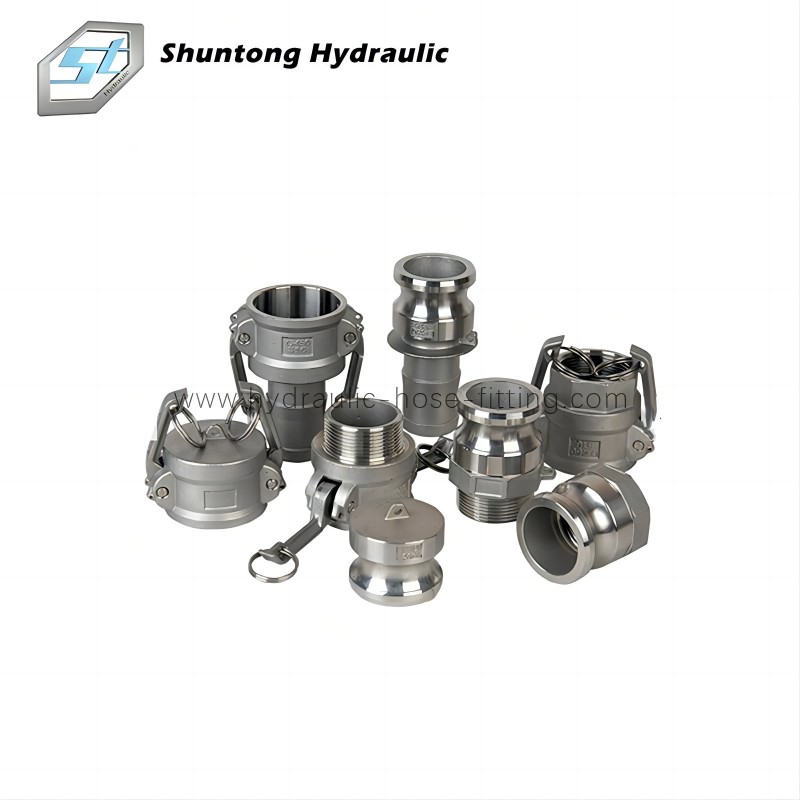1. Aluminum:
Aluminum camlock couplings are popular for their light weight and corrosion resistance, especially for the transfer of non-corrosive fluids. Although they are less expensive, their durability may require additional consideration in high-pressure or heavy-duty applications.
2. Brass and Bronze:
Brass and bronze camlock couplings are widely used in various fluid systems due to their excellent corrosion resistance and good machinability. These materials perform well in medium pressure and low-corrosive environments, and although they are heavier than aluminum fittings, they are more durable.
3. Stainless Steel:
Stainless steel camlock couplings are known for their excellent corrosion resistance and durability, and can withstand extreme chemical environments such as acidic and salt water environments. They are often used in applications with high pressure and/or corrosive fluids to ensure system reliability and durability.
4. Polypropylene:
Polypropylene camlock couplings are popular in the chemical and food industries because they have excellent corrosion resistance to a variety of chemicals and food-grade fluids. In addition, polypropylene is also impact-resistant, lightweight and easy to operate, making it an ideal choice in these fields.
5. Other engineering plastic materials:
Engineering plastics such as nylon and PVC are also commonly used to manufacture camlock couplings to meet specific chemical or temperature requirements. These materials have excellent corrosion resistance, high temperature resistance and mechanical properties, and are suitable for a variety of complex industrial applications.

 English
English  Español
Español  Português
Português  русский
русский  Français
Français  日本語
日本語  Deutsch
Deutsch  tiếng Việt
tiếng Việt  Italiano
Italiano  Nederlands
Nederlands  ภาษาไทย
ภาษาไทย  Polski
Polski  한국어
한국어  Svenska
Svenska  magyar
magyar  Malay
Malay  বাংলা ভাষার
বাংলা ভাষার  Dansk
Dansk  Suomi
Suomi  हिन्दी
हिन्दी  Pilipino
Pilipino  Türkçe
Türkçe  Gaeilge
Gaeilge  العربية
العربية  Indonesia
Indonesia  Norsk
Norsk  تمل
تمل  český
český  ελληνικά
ελληνικά  український
український  Javanese
Javanese  فارسی
فارسی  தமிழ்
தமிழ்  తెలుగు
తెలుగు  नेपाली
नेपाली  Burmese
Burmese  български
български  ລາວ
ລາວ  Latine
Latine  Қазақша
Қазақша  Euskal
Euskal  Azərbaycan
Azərbaycan  Slovenský jazyk
Slovenský jazyk  Македонски
Македонски  Lietuvos
Lietuvos  Eesti Keel
Eesti Keel  Română
Română  Slovenski
Slovenski  मराठी
मराठी  Srpski језик
Srpski језик 





